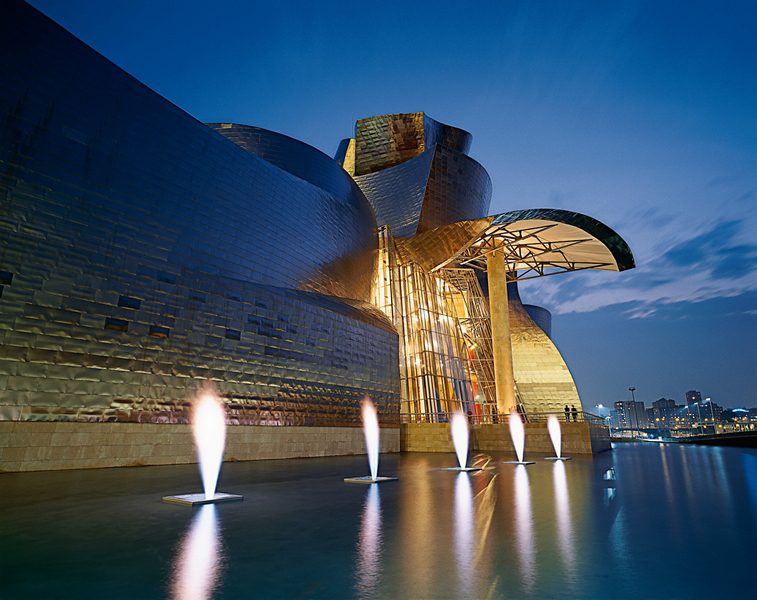ARCHITECTURE: Guggenheim Museum Bilbao
 Frank Gehry’s Guggenheim Museum Bilbao not only changed the way that architects and people think about museums, but also boosted Bilbao’s economy with its astounding success. In fact, the phenomenon of a city’s transformation following the construction of a significant piece of architecture is now referred to as the “Bilbao Effect”*.
Frank Gehry’s Guggenheim Museum Bilbao not only changed the way that architects and people think about museums, but also boosted Bilbao’s economy with its astounding success. In fact, the phenomenon of a city’s transformation following the construction of a significant piece of architecture is now referred to as the “Bilbao Effect”*.
By Efi Michalrou
Plans for a new museum in Bilbao date to the late ‘80s, when the Basque Administration began formulating a major redevelopment of the region. It was not until 1991, however, that Basque authorities proposed the idea for a Guggenheim Museum Bilbao to the Solomon R. Guggenheim Foundation. In moving forward with the museum a site was selected and three architects, Arata Isozaki, Coop Himmelb(l)au and Frank Gehry, were invited to participate in a competition to produce a conceptual design. Almost from the moment it opened in 1997, Gehry’s Guggenheim Museum Bilbao, with its distinctive titanium curves and soaring glass atrium, was hailed as one of the most important buildings of the 20th Century. The use of cutting-edge computer-aided design technology enabled him to translate poetic forms into reality. The resulting architecture is sculptural and expressionistic, with spaces unlike any others for the presentation of art. The Museum is seamlessly integrated into the urban context, unfolding its interconnecting shapes of stone, glass, and titanium on a 32.500 square-meter site along the Nervión River in the old industrial heart of the city. 11.000 square meters of exhibition space are distributed over 19 galleries. 10 of these galleries have a classic orthogonal plan and can be identified from the exterior by their stone finishes, 9 other irregularly shaped galleries present a remarkable contrast and can be identified from the outside by their swirling forms and titanium cladding. The largest gallery, measuring 30 X 130 meters, was used for temporary exhibitions for several years. In 2005, it became the site of the largest sculpture commission in history, Richard Serra’s monumental installation The Matter of Time.
* The term “Bilbao Effect”, however, has also been employed by critics who have denounced the Museum as a symbol of gentrification and cultural imperialism.
